SNVS269D January 2004 – December 2014 LM5104
PRODUCTION DATA.
- 1 Features
- 2 Applications
- 3 Description
- 4 Revision History
- 5 Pin Configuration and Functions
- 6 Specifications
- 7 Detailed Description
- 8 Application and Implementation
- 9 Power Supply Recommendations
- 10Layout
- 11Device and Documentation Support
- 12Mechanical, Packaging, and Orderable Information
封裝選項(xiàng)
機(jī)械數(shù)據(jù) (封裝 | 引腳)
散熱焊盤機(jī)械數(shù)據(jù) (封裝 | 引腳)
訂購(gòu)信息
6 Specifications
6.1 Absolute Maximum Ratings(1)(1)
| MIN | MAX | UNIT | |
|---|---|---|---|
| VDD to VSS | –0.3 | 18 | V |
| VHB to VHS | –0.3 | 18 | V |
| IN to VSS | –0.3 | VDD + 0.3 | V |
| LO Output | –0.3 | VDD + 0.3 | V |
| HO Output | VHS – 0.3 | VHB + 0.3 | V |
| VHS to VSS | −1 | 100 | V |
| VHB to VSS | 118 | V | |
| RT to VSS | –0.3 | 5 | V |
| Junction Temperature | 150 | °C | |
| Storage temperature range, Tstg | –55 | 150 | °C |
(1) If Military/Aerospace specified devices are required, please contact the Texas Instruments Sales Office/Distributors for availability and specifications.
6.2 ESD Ratings
| VALUE | UNIT | |||
|---|---|---|---|---|
| V(ESD) | Electrostatic discharge | Human body model (HBM), per ANSI/ESDA/JEDEC JS-001(1) | ±2000 | V |
(1) JEDEC document JEP155 states that 500-V HBM allows safe manufacturing with a standard ESD control process.
6.3 Recommended Operating Conditions
| MIN | MAX | UNIT | |
|---|---|---|---|
| VDD | 9 | 14 | V |
| HS | –1 | 100 | V |
| HB | VHS + 8 | VHS + 14 | V |
| HS Slew Rate | < 50 | V/ns | |
| Junction Temperature | –40 | 125 | °C |
6.4 Thermal Information
| THERMAL METRIC(1) | LM5104 | UNIT | ||
|---|---|---|---|---|
| D | DPR | |||
| 8 PINS | 10 PINS | |||
| RθJA | Junction-to-ambient thermal resistance | 114.5 | 37.9 | °C/W |
| RθJC(top) | Junction-to-case (top) thermal resistance | 61.1 | 38.1 | |
| RθJB | Junction-to-board thermal resistance | 55.6 | 14.9 | |
| ψJT | Junction-to-top characterization parameter | 9.7 | 0.4 | |
| ψJB | Junction-to-board characterization parameter | 54.9 | 15.2 | |
| RθJC(bot) | Junction-to-case (bottom) thermal resistance | n/a | 4.4 | |
(1) For more information about traditional and new thermal metrics, see the IC Package Thermal Metrics application report, SPRA953.
6.5 Electrical Characteristics
MIN and MAX limits apply over the full operating junction temperature range. Unless otherwise specified, TJ = +25°C, VDD = VHB = 12 V, VSS = VHS = 0 V, RT = 100kΩ. No Load on LO or HO.| PARAMETER | TEST CONDITIONS | MIN(2) | TYP | MAX(2) | UNIT | |
|---|---|---|---|---|---|---|
| SUPPLY CURRENTS | ||||||
| IDD | VDD Quiescent Current | LI = HI = 0 V | 0.4 | 0.6 | mA | |
| IDDO | VDD Operating Current | f = 500 kHz | 1.9 | 3 | mA | |
| IHB | Total HB Quiescent Current | LI = HI = 0 V | 0.06 | 0.2 | mA | |
| IHBO | Total HB Operating Current | f = 500 kHz | 1.3 | 3 | mA | |
| IHBS | HB to VSS Current, Quiescent | VHS = VHB = 100 V | 0.05 | 10 | µA | |
| IHBSO | HB to VSS Current, Operating | f = 500 kHz | 0.08 | mA | ||
| INPUT PINS | ||||||
| VIL | Low Level Input Voltage Threshold | 0.8 | 1.8 | V | ||
| VIH | High Level Input Voltage Threshold | 1.8 | 2.2 | V | ||
| RI | Input Pulldown Resistance | 100 | 200 | 500 | kΩ | |
| TIME DELAY CONTROLS | ||||||
| VRT | Nominal Voltage at RT | 2.7 | 3 | 3.3 | V | |
| IRT | RT Pin Current Limit | RT = 0 V | 0.75 | 1.5 | 2.25 | mA |
| TD1 | Delay Timer, RT = 10 kΩ | 58 | 90 | 130 | ns | |
| TD2 | Delay Timer, RT = 100 kΩ | 140 | 200 | 270 | ns | |
| UNDER VOLTAGE PROTECTION | ||||||
| VDDR | VDD Rising Threshold | 6.0 | 6.9 | 7.4 | V | |
| VDDH | VDD Threshold Hysteresis | 0.5 | V | |||
| VHBR | HB Rising Threshold | 5.7 | 6.6 | 7.1 | V | |
| VHBH | HB Threshold Hysteresis | 0.4 | V | |||
| BOOT STRAP DIODE | ||||||
| VDL | Low-Current Forward Voltage | IVDD-HB = 100 µA | 0.60 | 0.9 | V | |
| VDH | High-Current Forward Voltage | IVDD-HB = 100 mA | 0.85 | 1.1 | V | |
| RD | Dynamic Resistance | IVDD-HB = 100 mA | 0.8 | 1.5 | Ω | |
| LO GATE DRIVER | ||||||
| VOLL | Low-Level Output Voltage | ILO = 100 mA | 0.25 | 0.4 | V | |
| VOHL | High-Level Output Voltage | ILO = –100 mA VOHL = VDD – VLO |
0.35 | 0.55 | V | |
| IOHL | Peak Pullup Current | VLO = 0 V | 1.6 | A | ||
| IOLL | Peak Pulldown Current | VLO = 12 V | 1.8 | A | ||
| HO GATE DRIVER | ||||||
| VOLH | Low-Level Output Voltage | IHO = 100 mA | 0.25 | 0.4 | V | |
| VOHH | High-Level Output Voltage | IHO = –100 mA, VOHH = VHB – VHO |
0.35 | 0.55 | V | |
| IOHH | Peak Pullup Current | VHO = 0 V | 1.6 | A | ||
| IOLH | Peak Pulldown Current | VHO = 12 V | 1.8 | A | ||
6.6 Switching Characteristics
MAX limits apply over the full operating junction temperature range. Unless otherwise specified, TJ = +25°C, VDD = VHB = 12 V, VSS = VHS = 0 V, No Load on LO or HO .| PARAMETER | TEST CONDITIONS | MIN(2) | TYP | MAX(2) | UNIT | |
|---|---|---|---|---|---|---|
| tLPHL | Lower Turn-Off Propagation Delay (IN Rising to LO Falling) |
25 | 56 | ns | ||
| tHPHL | Upper Turn-Off Propagation Delay (IN Falling to HO Falling) |
25 | 56 | |||
| tRC, tFC | Either Output Rise/Fall Time | CL = 1000 pF | 15 | |||
| tR, tF | Either Output Rise/Fall Time (3V to 9V) | CL = 0.1 µF | 0.6 | µs | ||
| tBS | Bootstrap Diode Turn-Off Time | IF = 20 mA, IR = 200 mA | 50 | ns |
(1) Absolute Maximum Ratings indicate limits beyond which damage to the component may occur. Recommended Operating Conditions under which operation of the device is specified. Recommended Operating Conditions do not imply performance limits. For performance limits and associated test conditions, see Electrical Characteristics.
(2) Min and Max limits are 100% production tested at 25°C. Limits over the operating temperature range are specified through correlation using Statistical Quality Control (SQC) methods. Limits are used to calculate Average Outgoing Quality Level (AOQL).
6.7 Typical Characteristics
 Figure 1. IDD vs Frequency
Figure 1. IDD vs Frequency
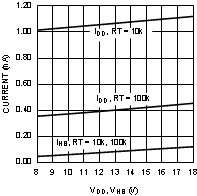 Figure 3. Quiescent Current vs Supply Voltage
Figure 3. Quiescent Current vs Supply Voltage
 Figure 2. Operating Current vs Temperature
Figure 2. Operating Current vs Temperature
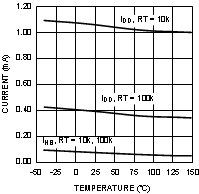 Figure 4. Quiescent Current vs Temperature
Figure 4. Quiescent Current vs Temperature
 Figure 5. IHB vs Frequency
Figure 5. IHB vs Frequency
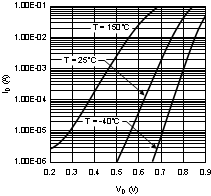 Figure 7. Diode Forward Voltage
Figure 7. Diode Forward Voltage
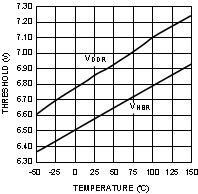 Figure 9. Undervoltage Rising Threshold vs Temperature
Figure 9. Undervoltage Rising Threshold vs Temperature
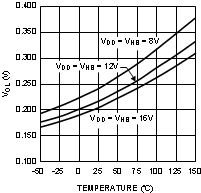 Figure 11. LO and HO Gate Drive—Low-Level Output Voltage vs Temperature
Figure 11. LO and HO Gate Drive—Low-Level Output Voltage vs Temperature
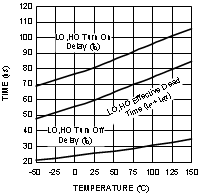 Figure 13. Timing vs Temperature RT = 10K
Figure 13. Timing vs Temperature RT = 10K
 Figure 6. HO & LO Peak Output Current vs Output Voltage
Figure 6. HO & LO Peak Output Current vs Output Voltage
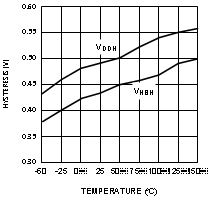 Figure 8. Undervoltage Threshold Hysteresis vs Temperature
Figure 8. Undervoltage Threshold Hysteresis vs Temperature
 Figure 10. LO and HO Gate Drive—High-Level Output Voltage vs Temperature
Figure 10. LO and HO Gate Drive—High-Level Output Voltage vs Temperature
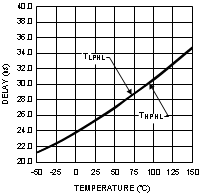 Figure 12. Turn Off Propagation Delay vs Temperature
Figure 12. Turn Off Propagation Delay vs Temperature
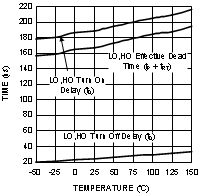 Figure 14. Timing vs Temperature RT = 100K
Figure 14. Timing vs Temperature RT = 100K